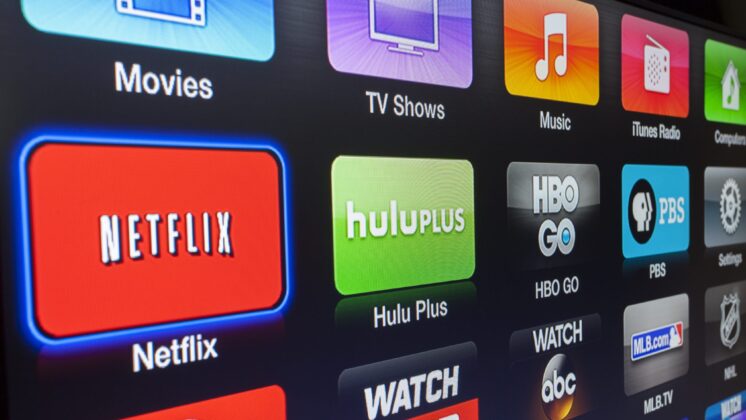Subscription video-on-demand (SVOD) has transformed the way much of the world watches TV. Netflix pioneered the concept shortly after delivering its one billionth DVD in 2007, pivoting away from rentals to the more convenient streaming model as download speeds improved. The company has enjoyed its position at the top of the global market ever since.
But other major players in entertainment have been making plans.
Disney’s entry, which took place this month, was on the grapevine for several years as the company reorganized and made acquisitions to build production, content, and streaming capabilities. The strategy for North America includes free access for Verizon mobile users and optional streaming bundles with Hulu (for more adult-focused content) and ESPN (for sports) to rival Netflix’s most popular price point.
Disney confirmed the shape of its new service, dubbed Disney+, in August 2019. Just after the announcement, Netflix stock prices, already down after a weak second quarter, dropped 10 percent. Netflix CEO Reed Hastings acknowledged the hit on September 20, but remained confident. After all, he argued, each service provider offers different content, and many consumers already subscribe to more than one SVOD service.
The question, then, is this: will Disney be just another fish in the stream, or should Netflix be worried?
The Genesis of Disney+
Disney has taken a tapered approach to the launch of its SVOD service. It tested the water in the Netherlands with a free trial just before releasing in North America, New Zealand, and Australia. Western Europe is scheduled to receive the service from spring 2020, and Asia Pacific in September 2021.
As for Japan? Well, it’s been here for a few months already – just in a different form.
Home to two of Disney’s most popular theme parks, Japan has long been a stalwart for the animation company. While traditional characters such as Mickey and Minnie are firmly associated with children in many other markets, here they capture the imagination of all ages. Disney princesses and other characters adorn many products, from stationery to textbooks.
It may seem natural, then, for Disney to kick things off in such a big, loyal market. In partnership with NTT Docomo (Japan’s number one mobile operator), Disney Deluxe hit Japanese TVs and smart devices in March 2019.
But there turned out to be a fairly big obstacle to the service’s success: the Japanese spend a lot of time at work.
Reaching Japanese Viewers
According to 2017 government data, the average amount of time Japanese people watch TV on weekdays decreased from 174 minutes in 2015 to 159 minutes in 2017 (the same year Americans were watching 238 minutes daily). The government doesn’t keep data for younger children, but teenagers and 20-somethings showed the biggest decline between 2013 and 2017.
Granted, these numbers may be deceptive, as all age groups (younger people in particular) are spending more time on different screens with both SVOD and AVOD (advertising-based video-on-demand such as YouTube, which is free with ads).
According to a June–July 2019 MarkeZine survey, SVOD services are still reaching only a small portion of the Japanese population. Of 5,934 respondents, 17.7% used at least one service. Amazon Prime Video won out at a humble 8.7%, followed by Netflix at just 2.5% and Hulu at 2.4%—truly a fragmented market.
While membership leaves something to be desired, awareness is just about to hit a tipping point. Amazon Prime remained highest (49.1%), likely due to aggressive promotional campaigns. Hulu was just behind (47.4%), largely due to a tie-up with Nippon TV that allows Hulu to host popular dramas. Netflix (34.7%) and sports SVOD DAZN (32.1%) trailed.
With low viewing rates, it may seem to Western audiences that Japan is either a mature market or less interested in TV, but these numbers suggest growth opportunities. Partnering with NTT Docomo looks to be a shrewd move on Disney’s part.
If the Price Is Right…
Each SVOD service comes with a unique strategy for partnerships and pricing plans. In Japan, Amazon Prime Video is bundled with the Prime service for free and speedy delivery from Amazon’s e-commerce site, as well as streamed music and reading, all for 500 yen per month. Netflix can be purchased directly or through Softbank on various plans starting at 800 yen. Hulu (which is owned by Disney) is 932 yen per month. Apple offers its service, Apple TV+, free for the first year to existing Apple hardware users.
So that’s the pricing strategy for the top SVODs. What about Disney?
Disney’s channel partner, NTT Docomo, led the mobile market in 2018 with 78.9 million contracts against KDDI’s 56.4 million and Softbank’s 44.8 million. Disney Deluxe is open to anyone, even non-Docomo users, for 700 yen per month—a price point below the content kings of Netflix and Hulu, but above Amazon. A name such as Disney’s usually commands a higher price, and the market has accepted recent price hikes from both Netflix and Hulu as they increase content. So why has Disney come in so low?
The answer is subscriber numbers. It’s not easy for Disney to collect data from moviegoers or park visitors, but streaming viewers gladly give away their personal information when they subscribe. Disney can hone its myriad products with demographic data and viewing habits. The relationship between Disney’s divisions is symbiotic, and streaming synergizes those bonds further still. Within just 24 hours of its North American launch, Disney+ had 10 million subscribers. It took Netflix two years to hit that number.
With Disney+ debuting this month just after Apple TV+, and other services gearing up for entry, the competitive arena is ripe for change. Is Hastings right? Are viewers ready to juggle all these new services? Or will the rise in competition against limited free time force consumers to become more selective about their subscriptions? We’ll have to tune in to find out!



